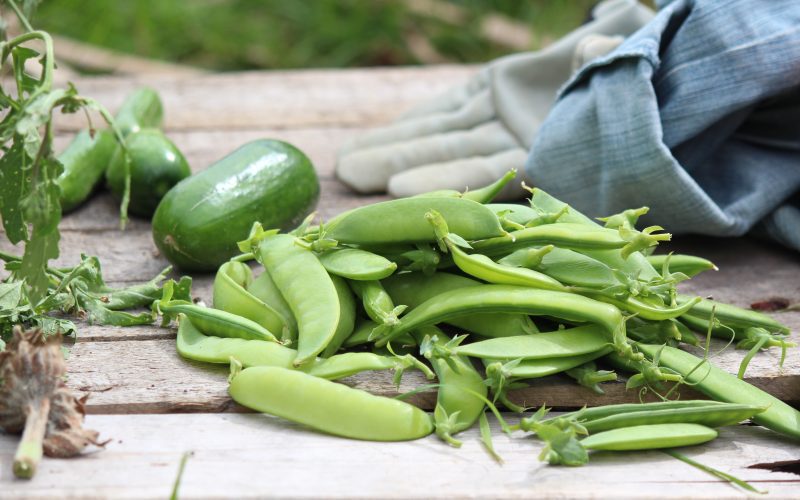Have you ever stopped to think about the quality of the produce you’re consuming on a daily basis? With modern-day farming practices and mass production, it’s easy to forget that not all fruits and vegetables are created equal. As consumers, we have a responsibility to pay attention to food quality and make informed choices about what we put into our bodies. In this blog post, we’ll explore why it’s important to prioritize food quality when it comes to produce, as well as share some tips for incorporating more high-quality foods into your diet. Get ready to learn how small changes can make a big impact on your health!
The Unfortunate Reality of Modern-Day Produce: Why We Need to Pay More Attention to Food Quality
Modern-day produce is often grown with the primary goal of maximizing yield and profit, rather than prioritizing the nutritional value or taste of the food. This has led to a decline in food quality, as well as environmental concerns such as soil degradation and increased use of pesticides.
Additionally, many fruits and vegetables are transported long distances before they reach our plates, resulting in reduced freshness and flavor. The emphasis on appearance over substance can also lead to certain varieties being favored over others for their size or color, regardless of taste or nutrient content.
It’s important to pay attention to food quality when it comes to produce because our health is directly impacted by what we eat. Consuming low-quality fruits and vegetables can increase our exposure to toxins while decreasing essential nutrients that support overall wellness.
By choosing high-quality produce that is locally sourced whenever possible, we not only prioritize our own health but also support sustainable farming practices that benefit both the environment and local economies.
The Different Types of Produce
When it comes to produce, there are many different types available. From fruits to vegetables, and everything in between, each type has its own unique nutritional benefits.
Fruits are a great source of vitamins and antioxidants that can help boost your immune system and improve overall health. Some popular fruits include apples, bananas, oranges, berries, melons, and grapes.
Vegetables are also packed with important vitamins and minerals that can help keep you healthy. Leafy greens like spinach and kale are high in iron while cruciferous veggies like broccoli and cauliflower contain cancer-fighting compounds.
Herbs such as basil and parsley add flavor to meals while providing anti-inflammatory properties. Spices like turmeric have been found to reduce inflammation in the body too.
Nuts and seeds provide healthy fats that help maintain heart health. Almonds for example contain monounsaturated fats which have been linked to lower cholesterol levels.
When it comes to produce options there is no shortage of choices out there! Incorporating a variety of fruits, vegetables herbs/spices into your diet will ensure optimal nutrition intake for better health outcomes!
The Pros and Cons of Each Type
When it comes to produce, there are many different types available. Each type has its own set of pros and cons that we need to consider when choosing what to eat.
One popular type of produce is fruits. Fruits come in a variety of colors, flavors, and textures which can make them a great addition to any meal or snack. They are also packed with essential vitamins and minerals like Vitamin C and potassium that our bodies need.
However, some fruits can be high in natural sugars which can lead to issues with blood sugar levels if not consumed in moderation. Additionally, some fruits may contain pesticides that could be harmful if not washed properly before consumption.
Another common type of produce is vegetables. Vegetables provide us with important nutrients like fiber and antioxidants that help keep us healthy. They are also low in calories making them an excellent choice for those looking to maintain a healthy weight.
On the other hand, some vegetables may be difficult for people with digestive issues or certain health conditions to digest properly due to their high fiber content. Additionally, like fruit, vegetables may also contain pesticides that could be harmful if not washed thoroughly before consumption.
While each type of produce has its own unique set of benefits and drawbacks, incorporating a variety into your diet is key for optimal nutrition and overall health.
What foods to eat on a Produce Diet?
When it comes to following a produce-based diet, there are many delicious and nutritious foods you can choose from. Here are some examples of produce that you might want to incorporate into your meals:
Leafy greens such as kale, spinach, and collard greens provide a great source of vitamins A and C as well as iron and calcium.
Colorful vegetables like peppers, carrots, beets, and sweet potatoes offer an array of nutrients including antioxidants.
Cruciferous veggies like broccoli, cauliflower and brussels sprouts have anti-inflammatory properties.
Fruits such as berries (blueberries), citrus fruits (oranges) or tropical fruit (pineapples) supply important vitamins such as vitamin C.
Nuts & seeds provide healthy fats along with protein plus minerals which include magnesium for example almonds or chia seeds
Ultimately the key is to focus on variety when selecting your produce. Aim for different colors in each meal – this will ensure that you’re getting a wide range of essential nutrients.
Recipes for a Produce Diet
When it comes to a produce diet, there are plenty of delicious and healthy recipes that you can try out. The key is to focus on fresh fruits and vegetables that are in season. This ensures that you get the best quality produce with maximum nutrients.
One easy recipe is a simple salad made with mixed greens, tomatoes, cucumbers, carrots, and your favorite vinaigrette. You can also add some nuts or seeds for added crunch and protein.
Another option is roasted veggies such as sweet potatoes, Brussels sprouts or broccoli seasoned with olive oil and herbs like rosemary or thyme. These make for great side dishes to any meal.
If you’re looking for something heartier, consider making vegetable stir-fry using ingredients like bell peppers, onions, mushrooms and snap peas sautéed in sesame oil served over brown rice.
Smoothies are an excellent way to incorporate more fruit into your diet. Blend together frozen berries with almond milk or yogurt plus spinach leaves for an energizing breakfast drink!
There’s no shortage of yummy recipes when it comes to a produce-based diet. Just remember always to choose seasonal items at their freshest!
Alternatives to the Produce Diet
While the produce diet has numerous benefits, it may not be a sustainable or realistic option for everyone. Thankfully, there are alternatives to consider.
One such alternative is the Mediterranean diet which emphasizes whole grains, healthy fats from olive oil and nuts, and plenty of fruits and vegetables. This way of eating has been linked to lower risks of heart disease, stroke, and some types of cancer.
Another option is the plant-based diet which does not necessarily eliminate all animal products but rather focuses on incorporating more plant foods into meals. Research suggests that this type of diet can improve cholesterol levels and reduce the risk of chronic diseases like diabetes.
For those who prefer a higher protein intake, the Paleo or Keto diets may be worth exploring as they prioritize meats and other protein sources while minimizing carbohydrates.
Ultimately, it’s important to find an approach to nutrition that works best for you based on your individual needs and preferences. Remember that every person’s body is different so what works well for one person may not work well for another.
Conclusion
As consumers, we have a responsibility to be mindful of the quality of produce that we buy and consume. Modern-day farming practices have made it easier for us to access a wide variety of fruits and vegetables all year round, but at what cost? We need to pay more attention to food quality if we want to ensure our health and wellbeing.
It’s important to remember that not all produce is created equal. Some types are more nutritious than others, while some may contain harmful chemicals or pesticides. By understanding the pros and cons of each type of produce, we can make better decisions about what foods to incorporate into our diets.
If you’re looking for inspiration on how to eat more produce, there are many delicious recipes out there that focus on using fresh fruits and vegetables as their main ingredients. From smoothie bowls to roasted veggies, there’s no shortage of options when it comes to incorporating plant-based foods into your meals.
Of course, a produce-centric diet isn’t for everyone. If you prefer other types of foods or have dietary restrictions, there are still ways you can prioritize food quality in your diet. For example, choosing organic options whenever possible or shopping at farmers’ markets for locally grown products.
In conclusion (sorry!), paying attention to food quality should be an essential part of any healthy lifestyle. By making informed choices about the types of produce we consume and where they come from, we can improve not just our own health but also support sustainable agriculture practices that benefit both people and the planet.












